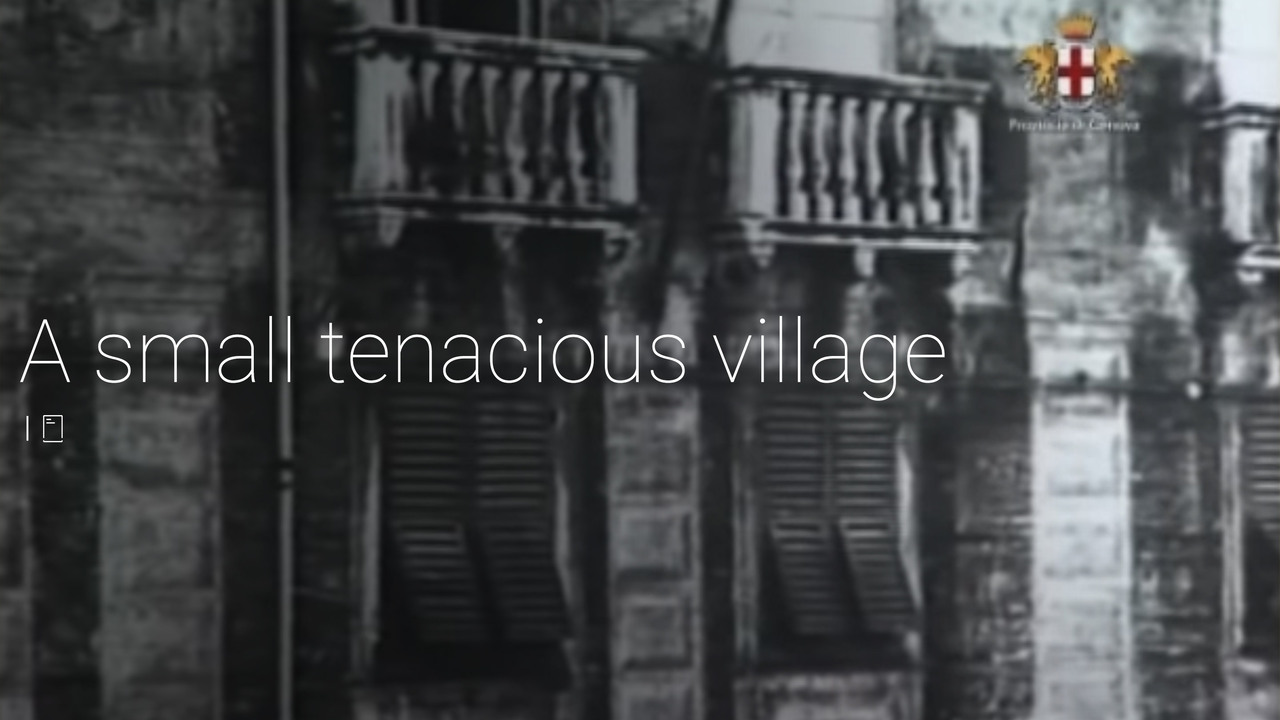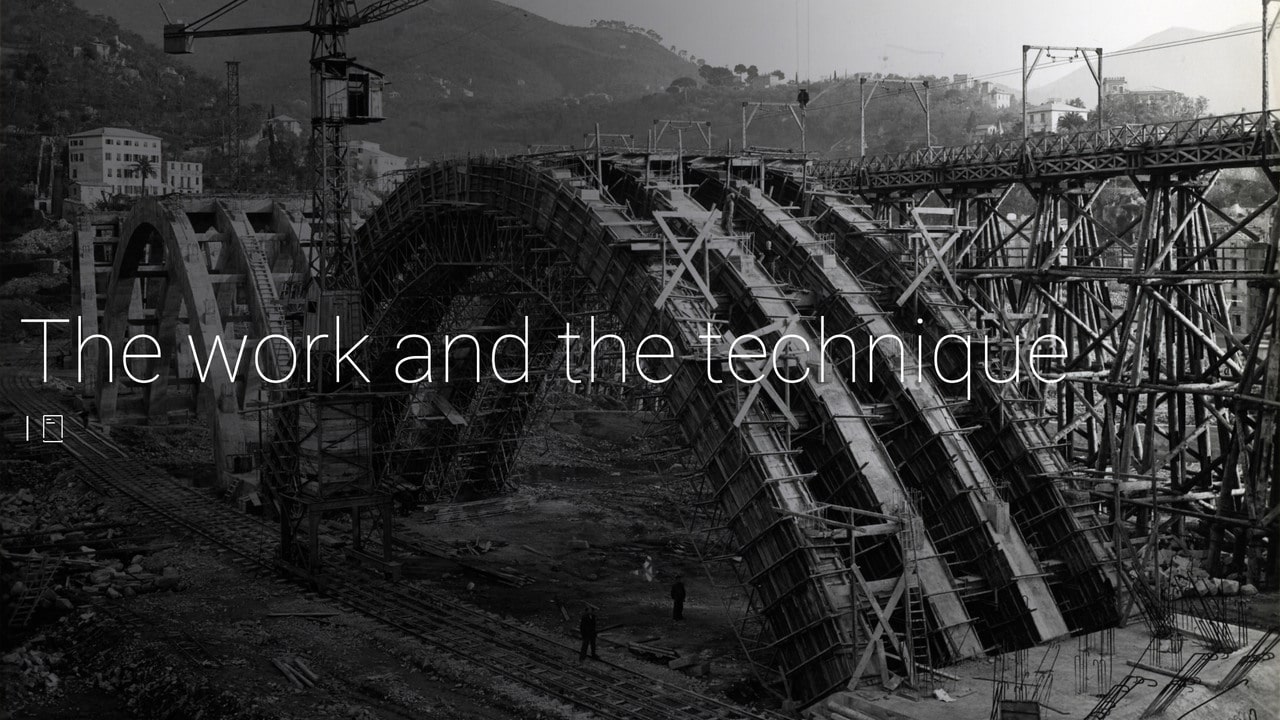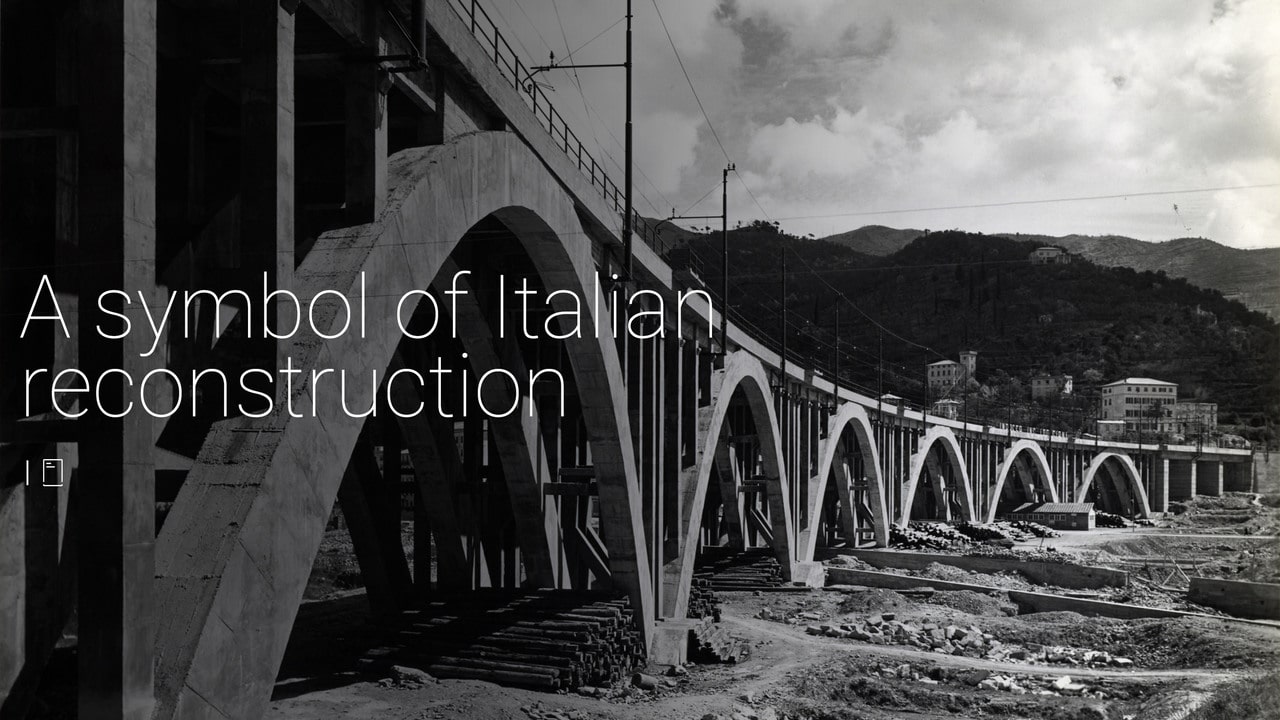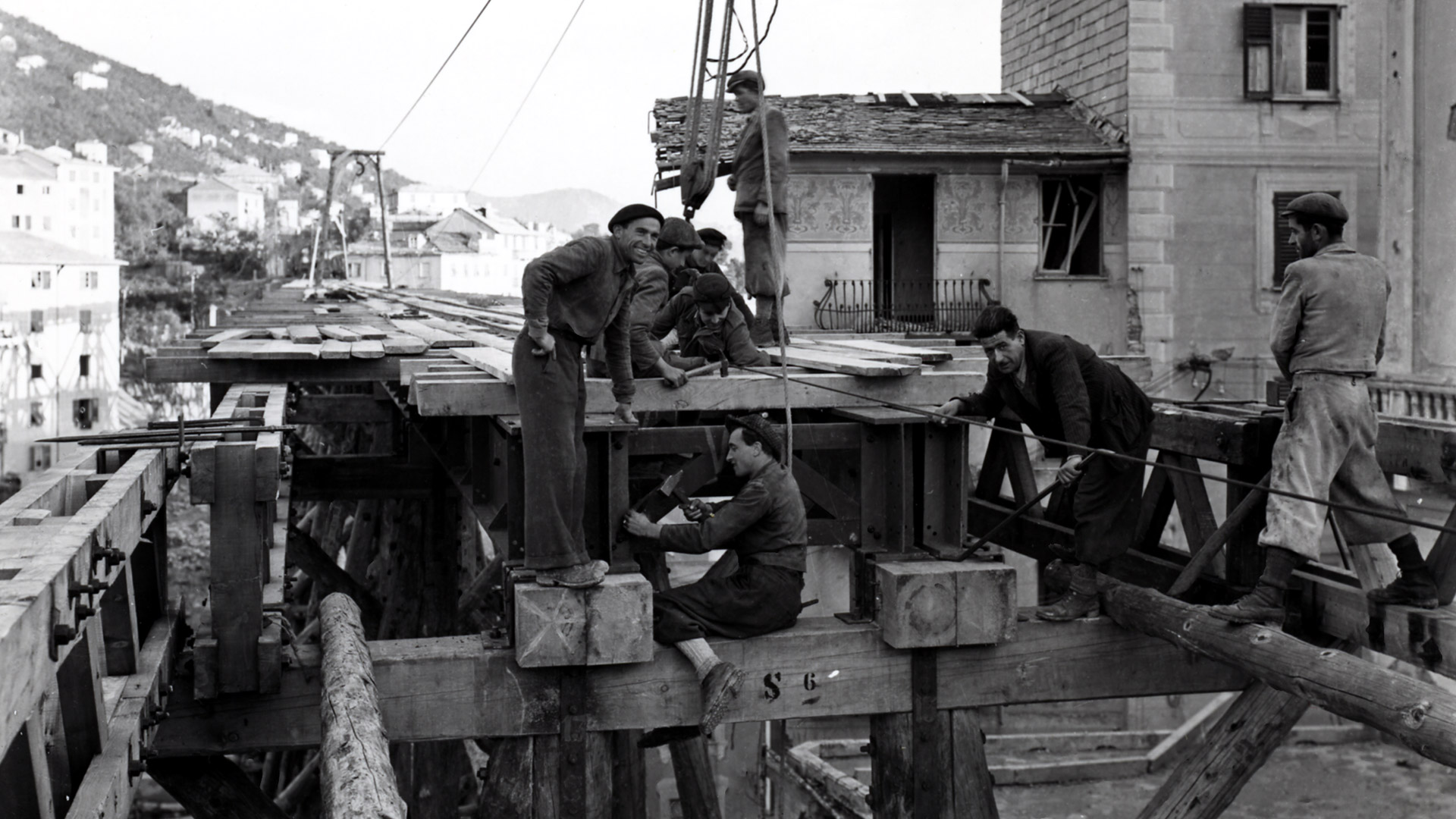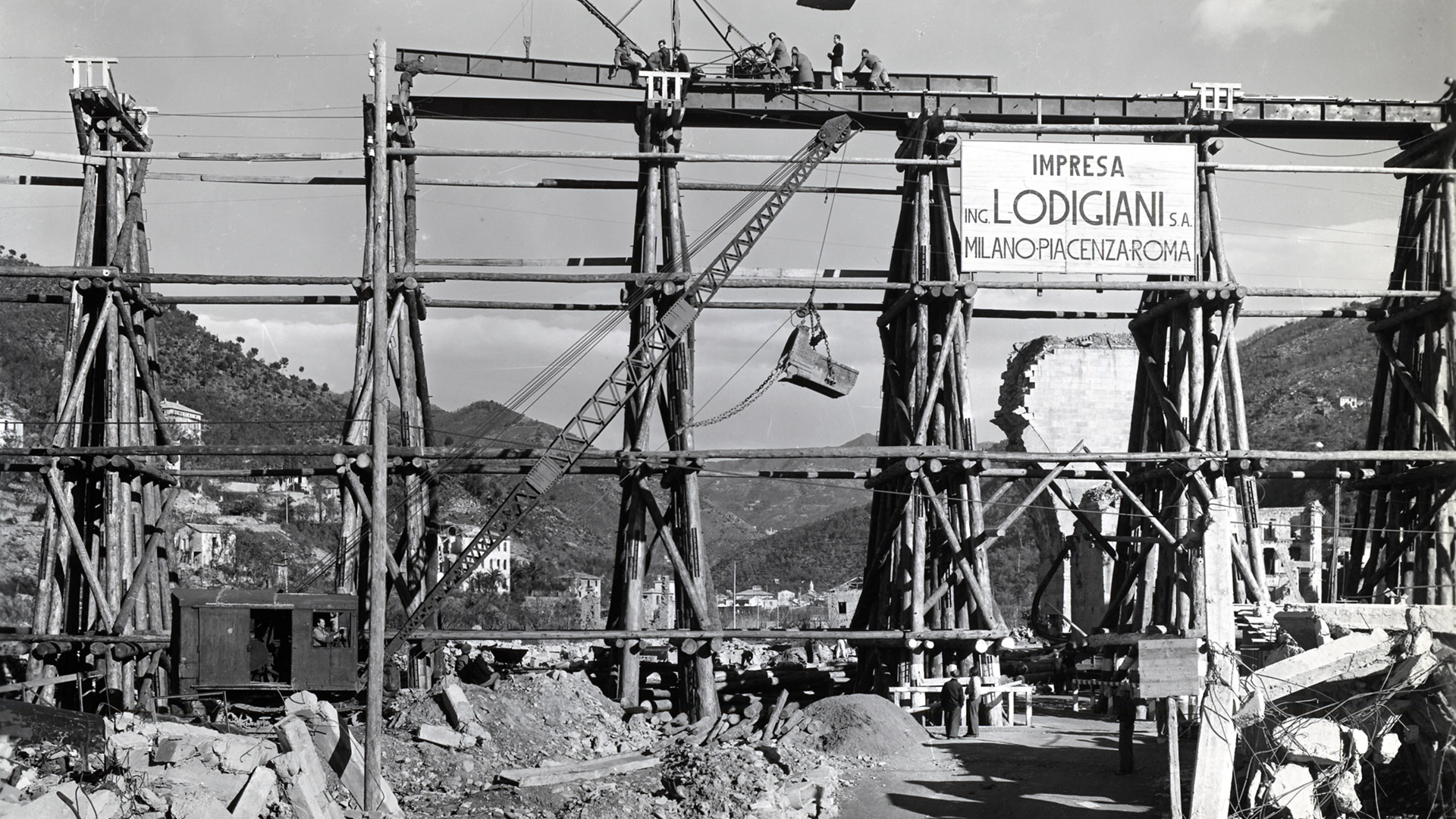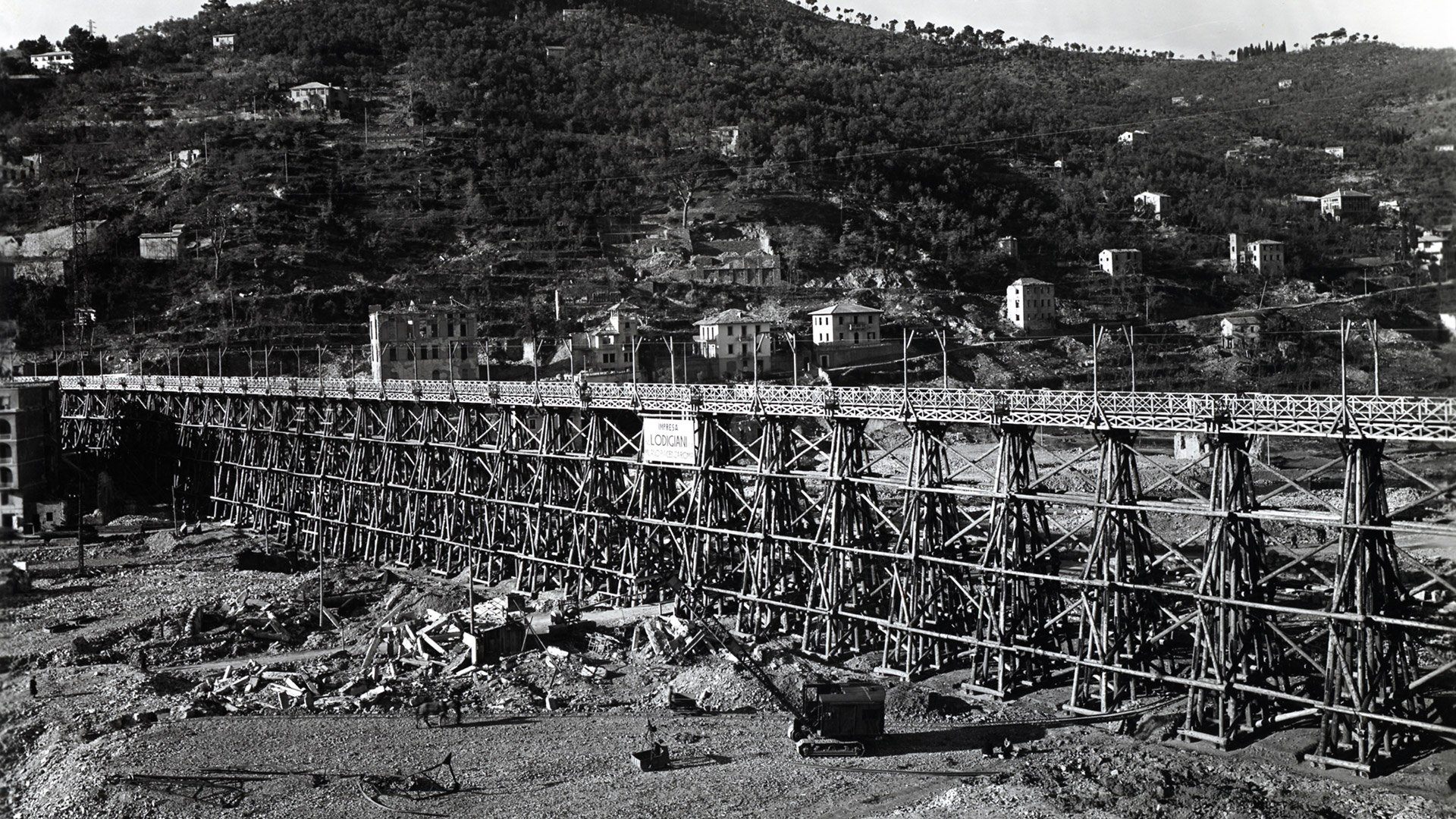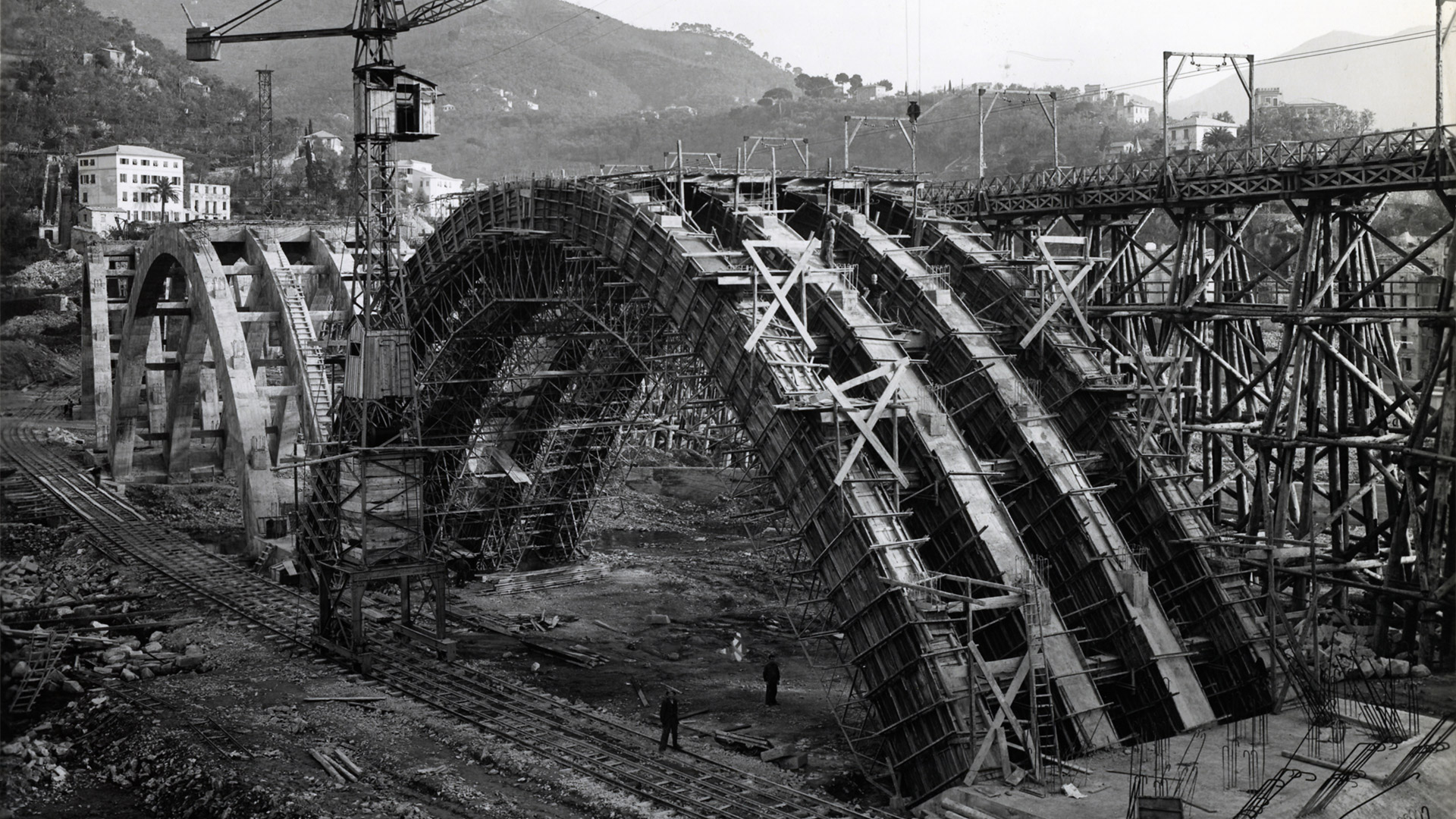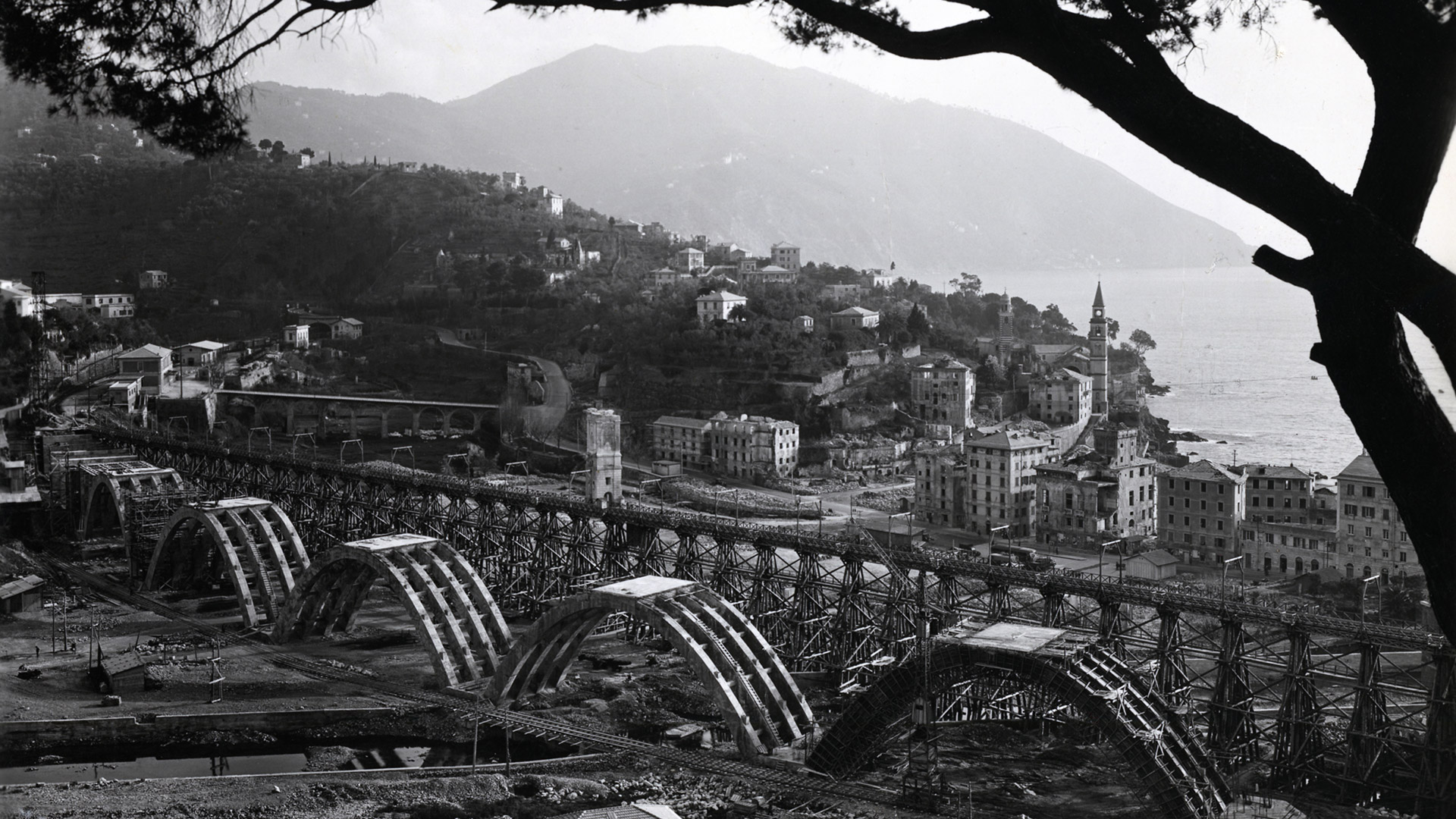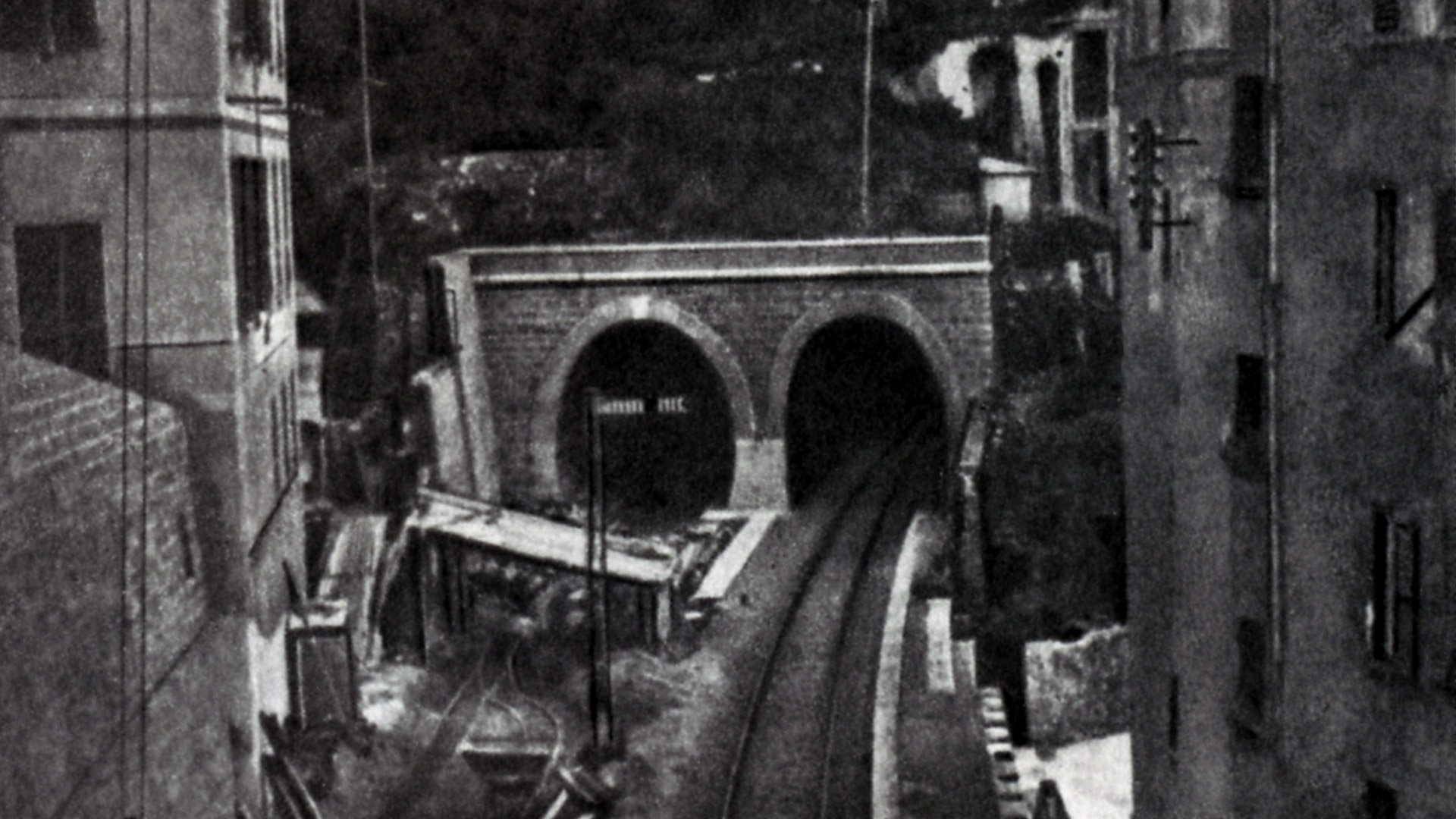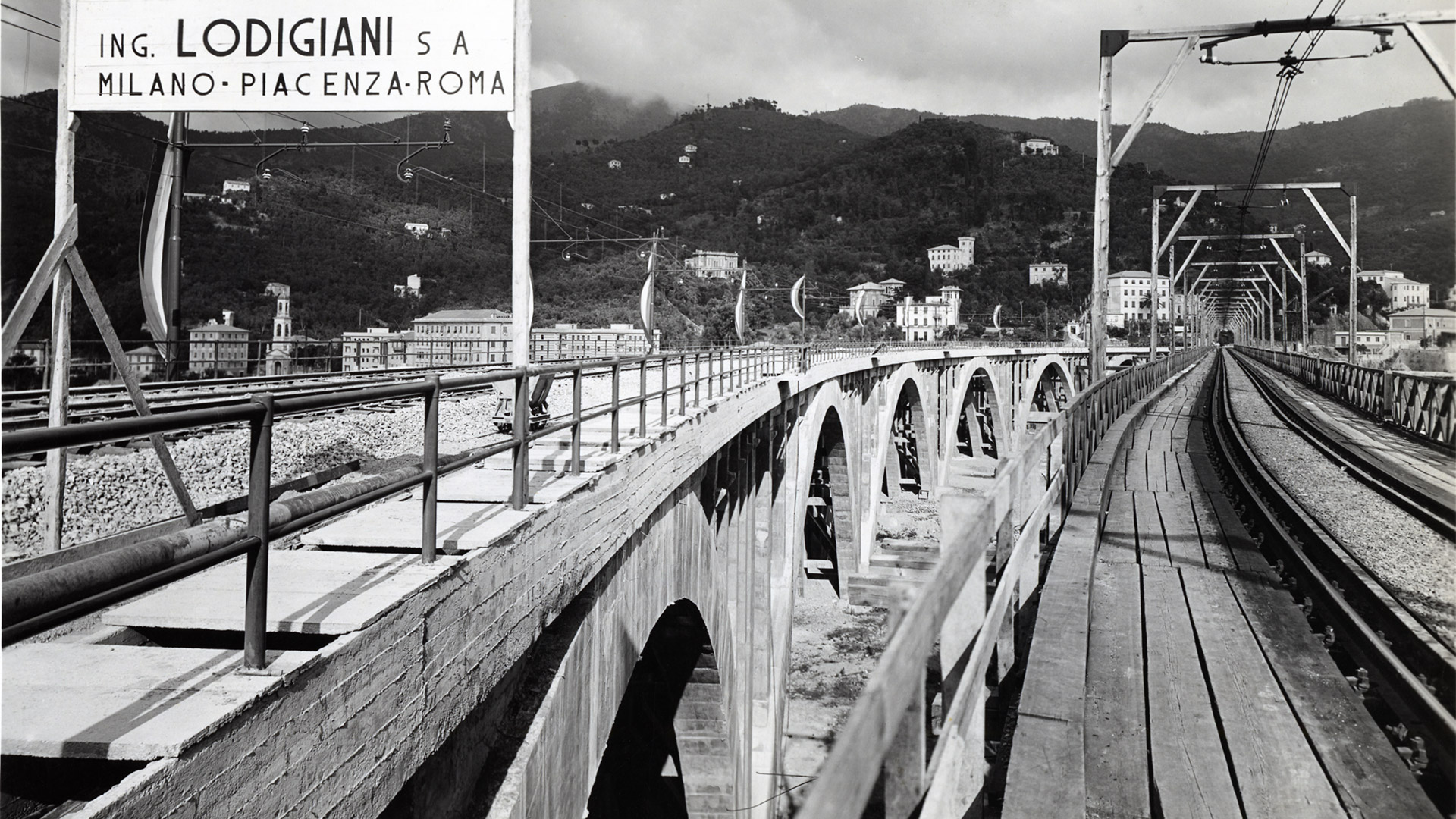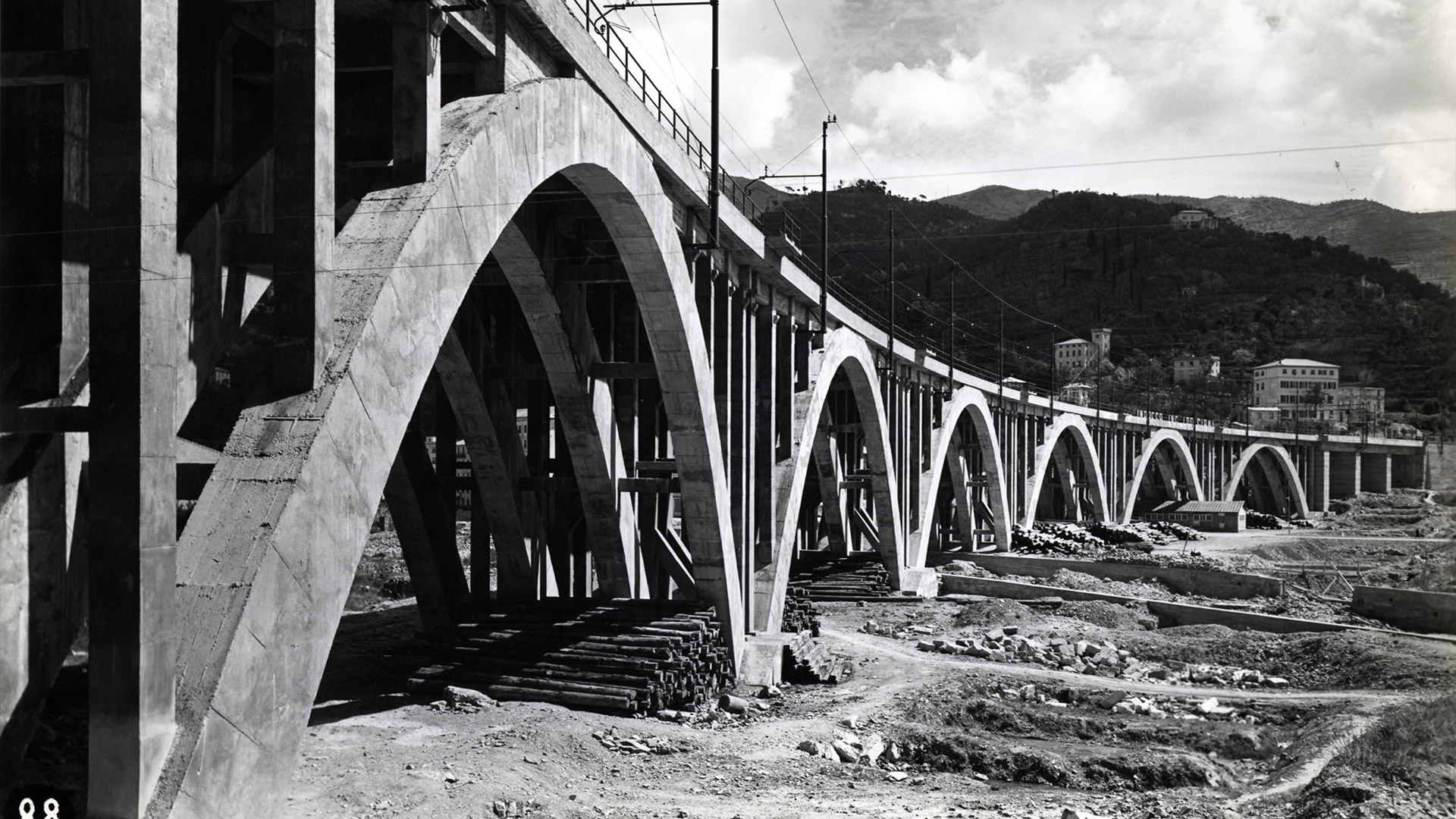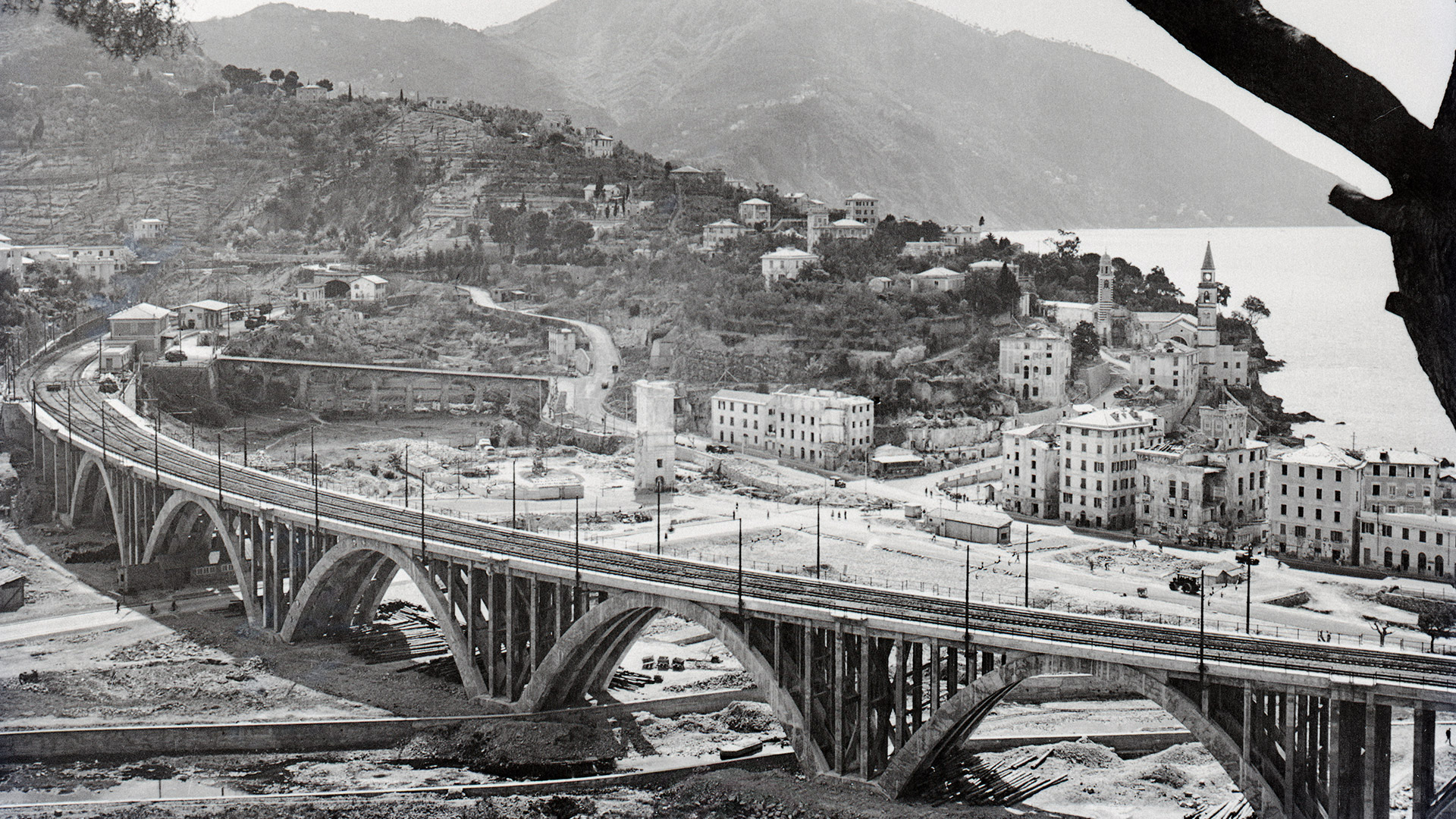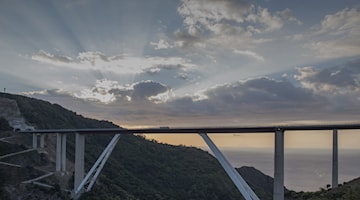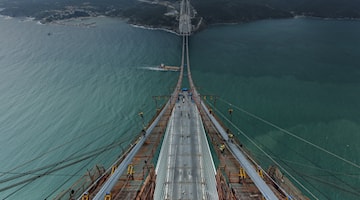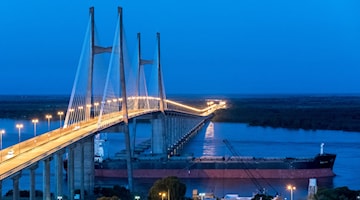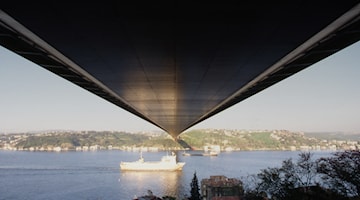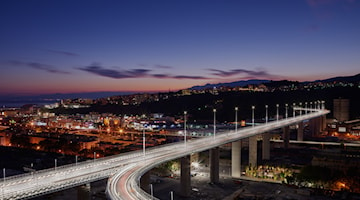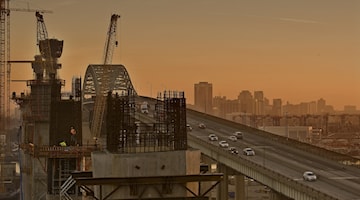A renaissance through the bridge
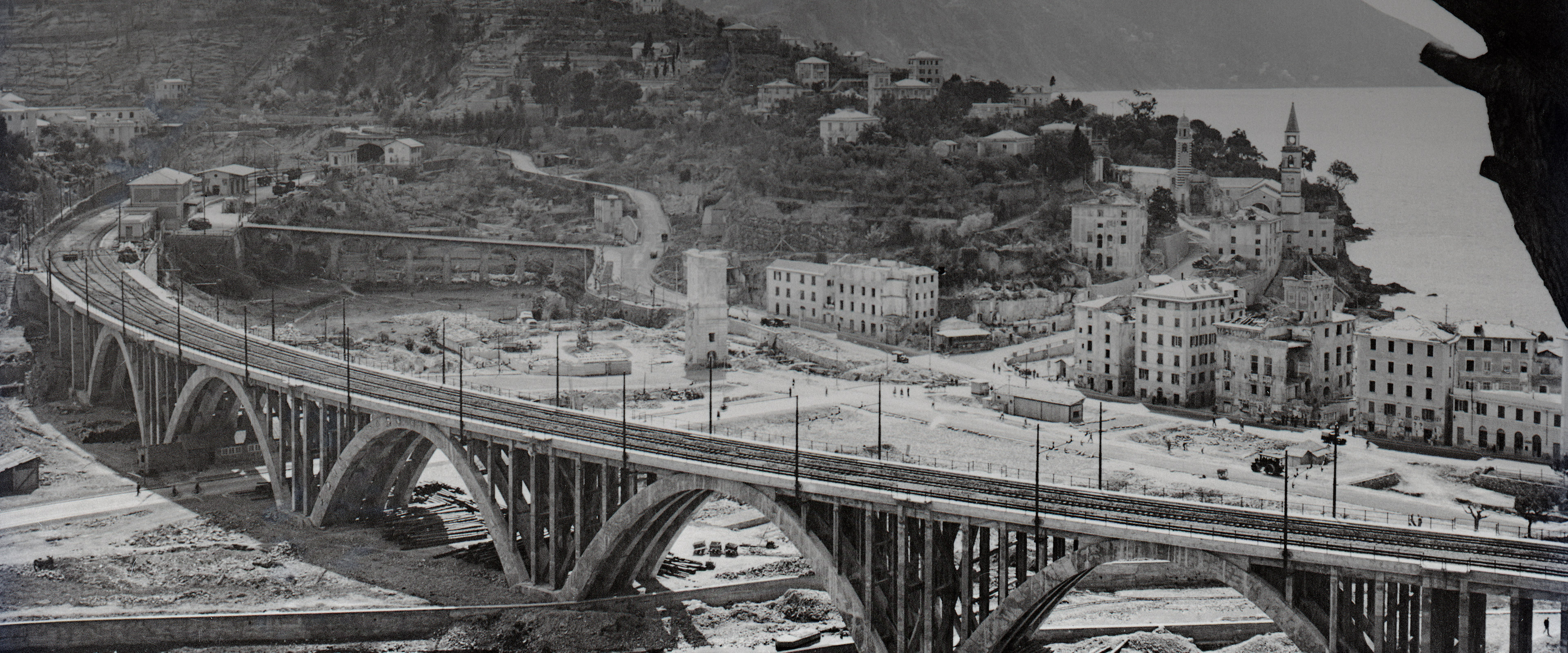
RECCO BRIDGE, ITALY
Recco is a town that is also known for its cheese "focaccia". Located west of the Portofino promontory, in the Levante riviera, in the province of Genoa its roots going back to the pre-Roman era. A millenarian story cancelled in just one night: on November 10, 1943, when 22 bombers of the Royal Air Force unhooked 33 tons of bombs to hit the railway bridge that looked on the roofs of many homes: they razed 90% of the urban nucleus to the ground.
It was a strategic bridge built in 1914-22 to strengthen the Ventimiglia-Pisa railway line (built in a few years after Italy's unity); the Recco station was inaugurated in 1968.
Besides the bridge, the bombings also damaged the railway line. The Recco Station became a crucial node that connected Genoa to Sestri Levante, with its 376 metre-curved bridge, completed in 1922. When the war ended, only 4% of the Recco buildings remained on its feet. To restore railway mobility a 6km temporary bridge was built (a single track one, in wood and steel H-beams). It was very noisy but safe, thanks to workers who every two months tightened every bolt.
Concomitantly, works on the new viaduct carried out uninterrupted. So, in 1948, when the 3,000 Volt airline was being activated along the section, after 3 years of work, the new bridge was inaugurated: with three tracks with day tympans, a curvature ray of 400 metres and 42.2 metre archways.
Its construction coincided with the first use in Italy of reinforced cement (for this work, 180 tons were used). 16.4 tons of steel, 160 workers and 12 specialised carpenters were also required.
A carpentry was built and an approximately 400-metre telpher crane, capable of carrying 2 tons was also used.
During reconstruction, Recco was raised one metre to prevent the consequences of the floods. The viaduct is coloured with the typical pastel shades of Ligurian houses, which according to tradition served owners, sailors and fishermen alike, to recognize them from the sea

THE WORK AND THE TECHNIQUE
TONS REINFORCED CEMENT (USED FOR THE FIRST TIME IN ITALY)
TONS STEEL
MT BRIDGE CURVATURE
WORKERS PERSONS INVOLVED
Ferrovie dello Stato
Lodigiani (pre-war) and Lodigiani - Girola (post-war), now both merged into the Webuild Group.
1914-1922
1945-1948
In 1914, Lodigiani, a company founded in 1906 and then part of the Webuild Group, began works on the Recco Bridge. It was destroyed during WW2.and at the end of the conflict, railway mobility had to be restored as soon as possible.
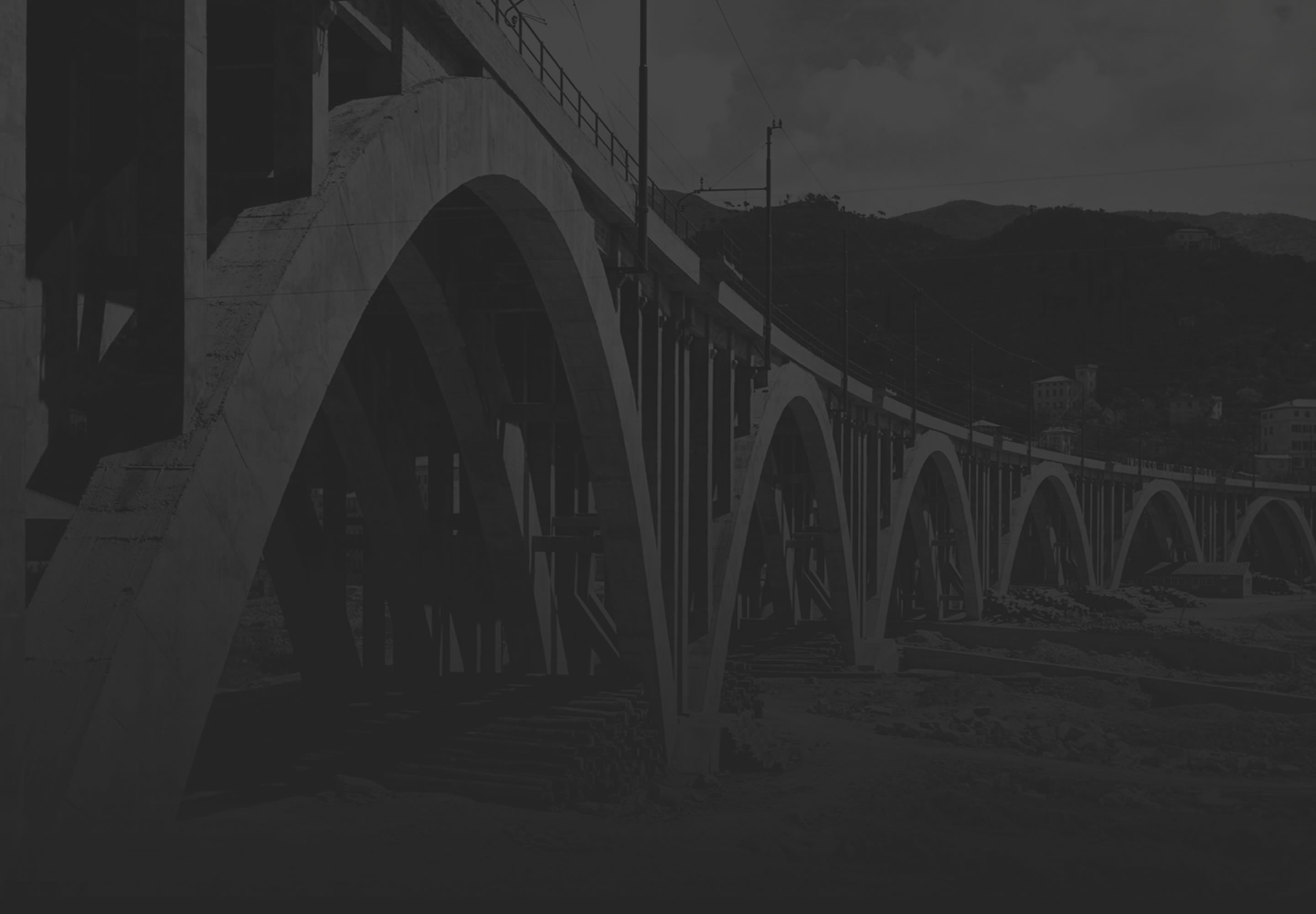
CULTURAL INSIGHTS
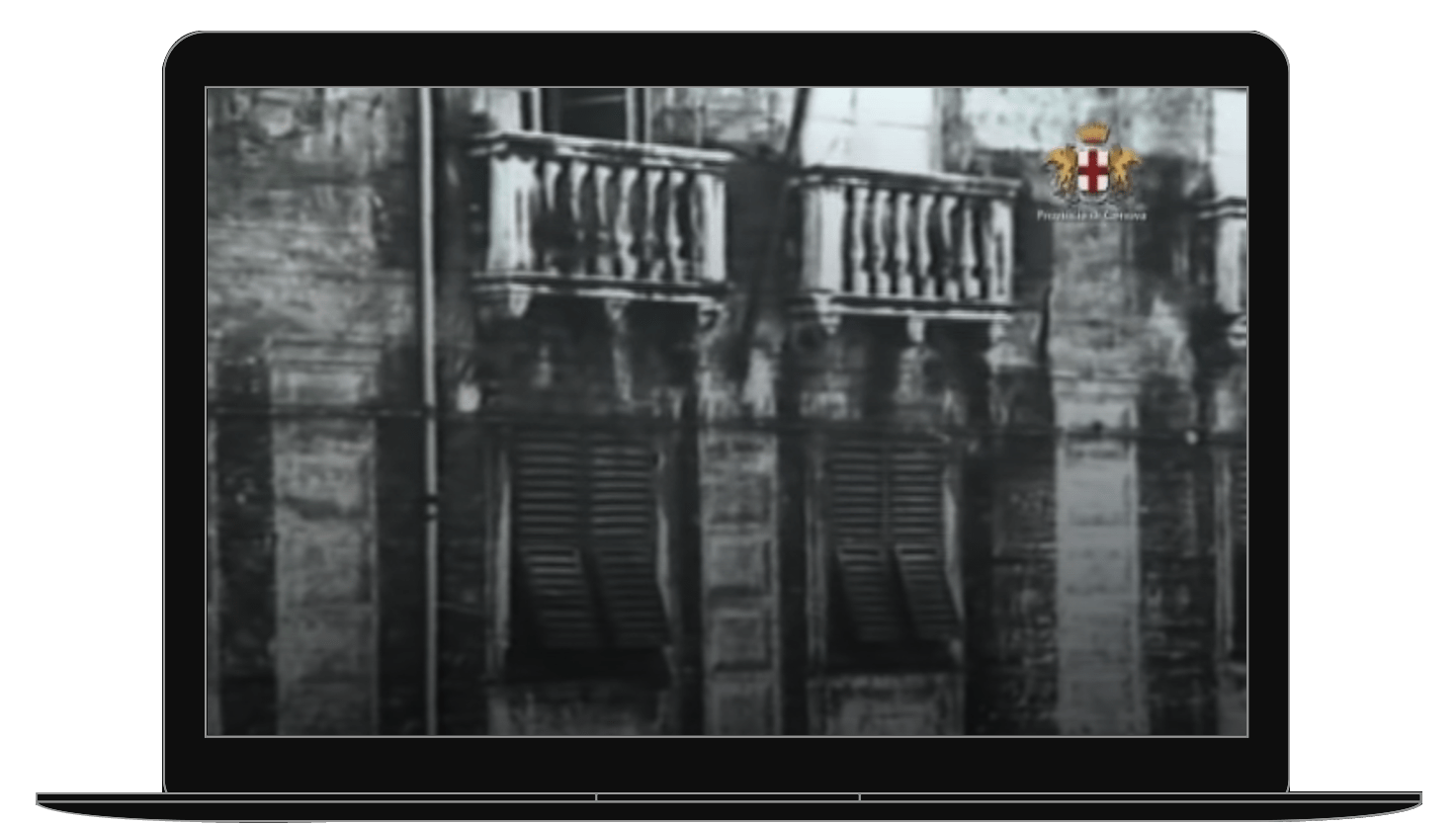
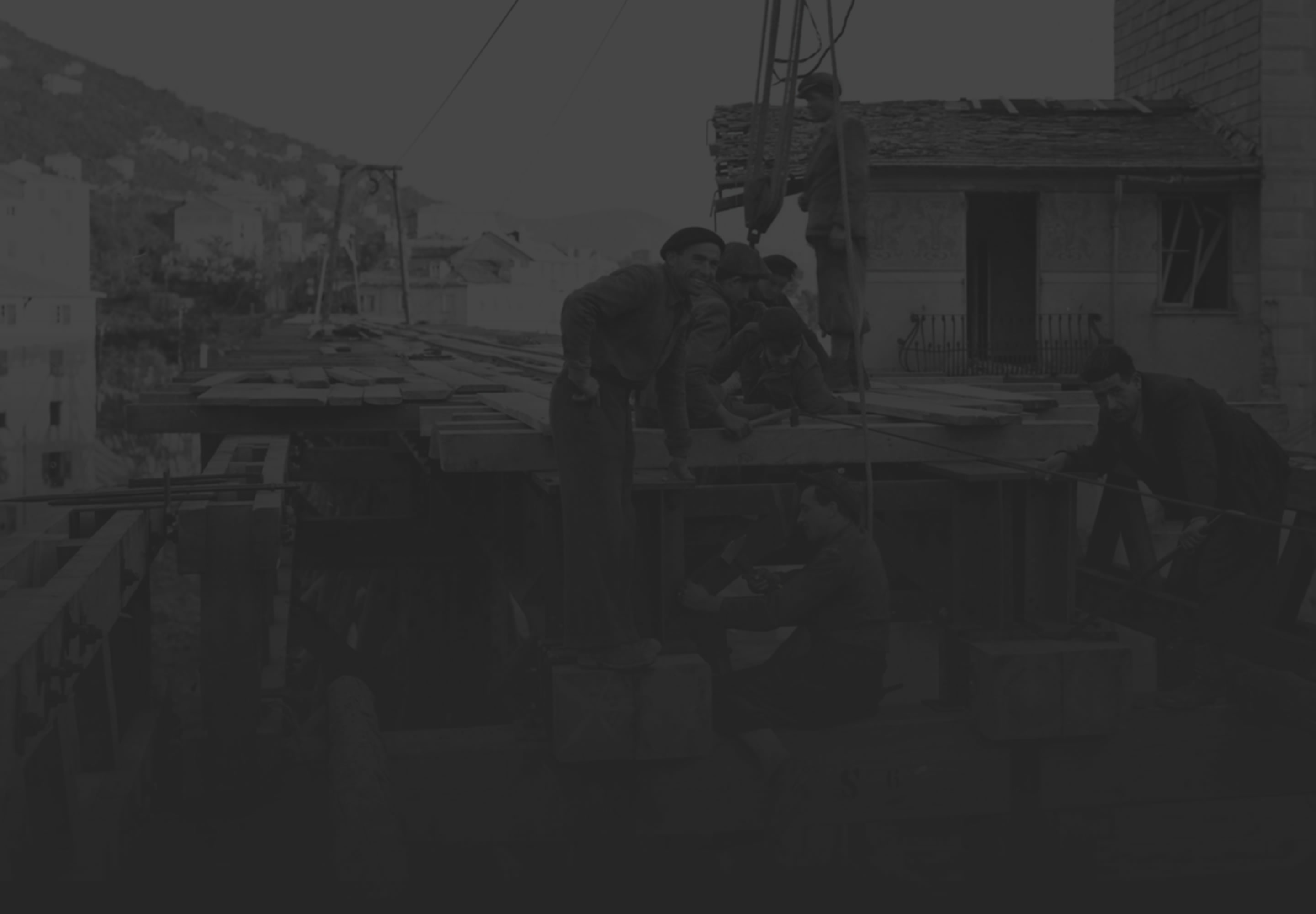
A symbol of Italian reconstruction
After almost 77 years its reopening, the Recco viaduct can be seen, in its entirety, along the skyline of the eponymous town. Today, it still supports the weight of a significant number of local commuters: with regard to the intermunicipal mobility of people (car trips, with transport by tyre and by train), the Genoa municipality is on top for similar type of mobility, producing an interchange of almost 139,000 trips during the day, equal to 51.5% of the overall intermunicipal mobility, with the Levantine of Chiavari (16.3%), Sestri Levante (9.7%) and Rapallo (9.2%) representing a huge 35%.
In 2024, the Average Daily Traffic near Camogli was 4,744 light vehicles and 63 heavy vehicles.





